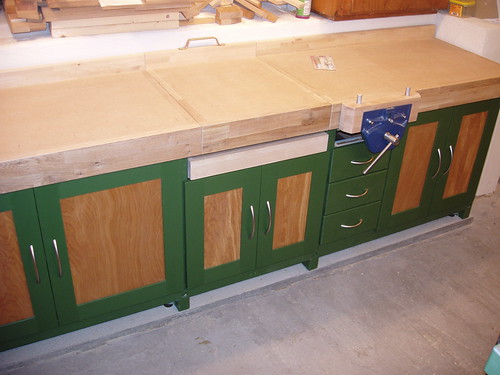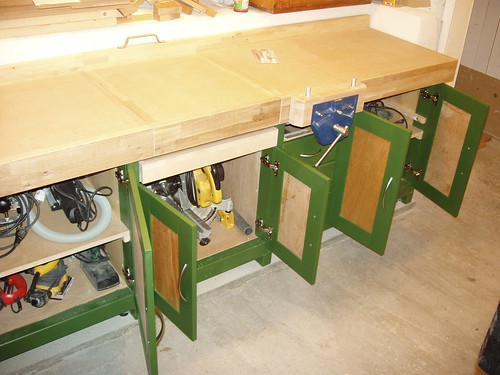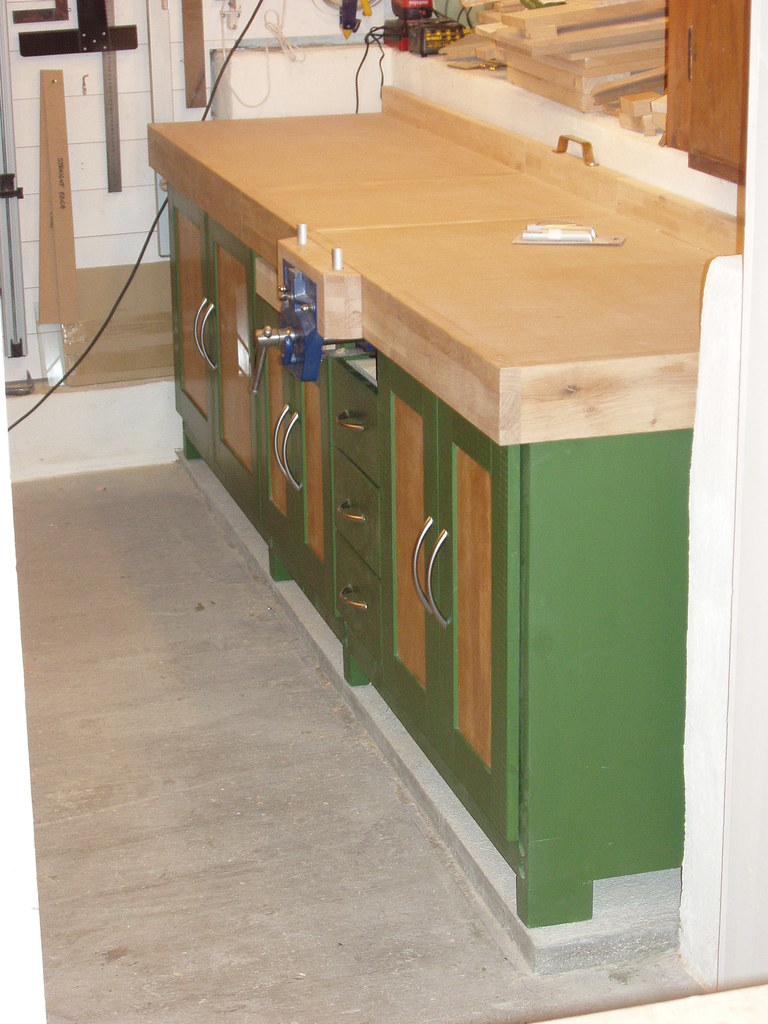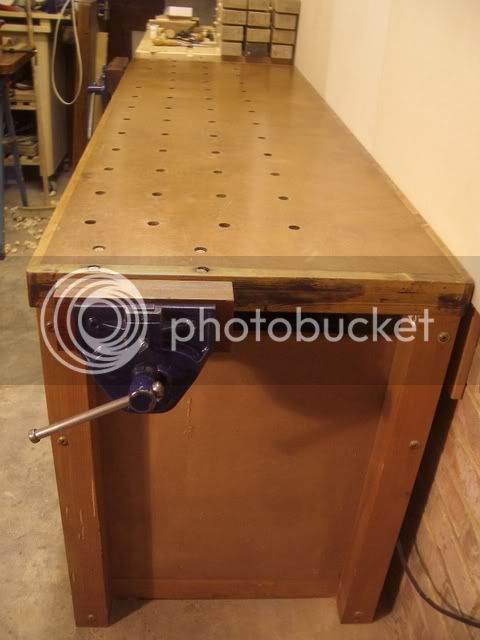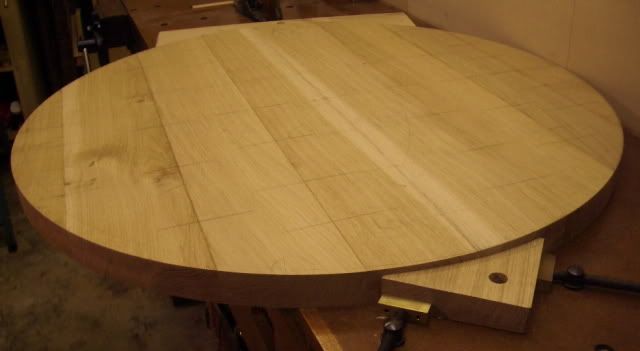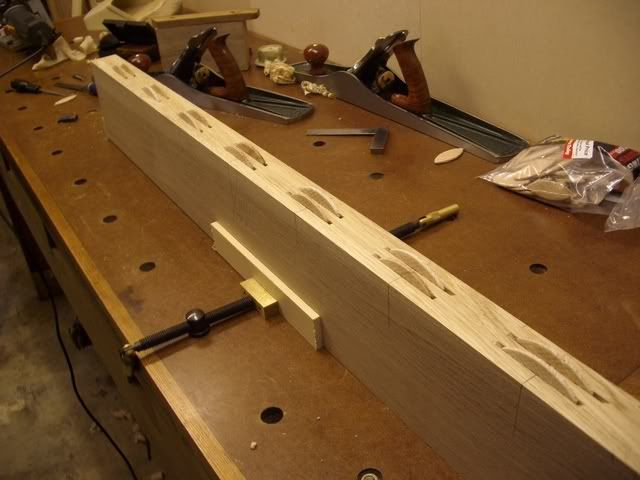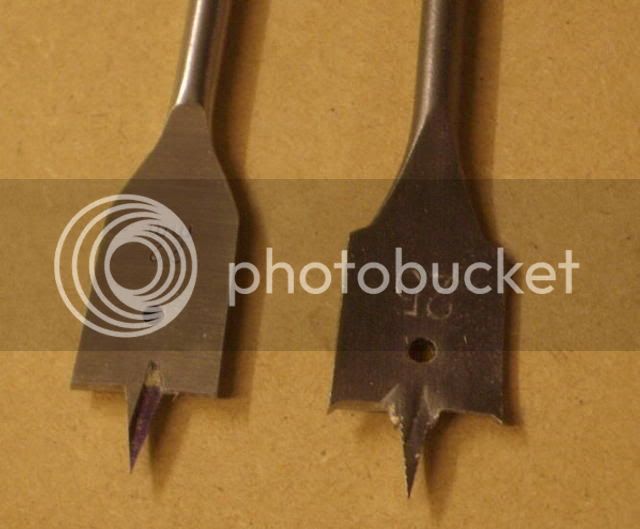The problem is quite simply the lack of volume in the room with such low ceilings. It just seems that the atmosphere is somehow constantly dusty. I hope to cure the problem with a permanently plumbed in extractor system which will run to every machine + possibly a workshop air filter.
Space is a problem but I've become very creative !
Progress on the bench has been rather slow the past week or so due to other commitments, but I have managed to sort out the centre bench top mounting using rare-earth magnets and I've finished the front vise jaw in beech. No pictures though.
Am currently waiting on an order of t-track from Rockler to mount the SCMS with, as mentioned earlier.
In the meantime I've started on the cupboards and drawers and will post further pictures in a coulple of days when I've had some progress that's worth sharing.
Mark
Space is a problem but I've become very creative !
Progress on the bench has been rather slow the past week or so due to other commitments, but I have managed to sort out the centre bench top mounting using rare-earth magnets and I've finished the front vise jaw in beech. No pictures though.
Am currently waiting on an order of t-track from Rockler to mount the SCMS with, as mentioned earlier.
In the meantime I've started on the cupboards and drawers and will post further pictures in a coulple of days when I've had some progress that's worth sharing.
Mark





